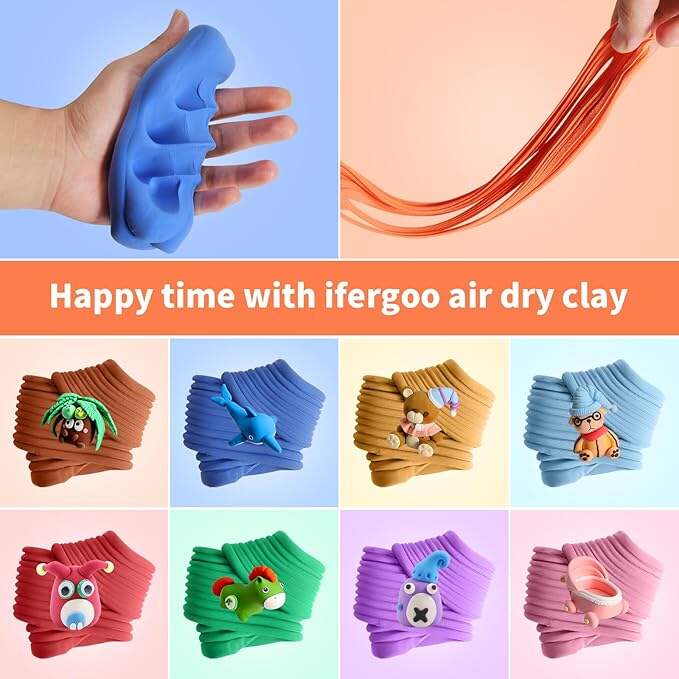GUANGZHOU, China – June 2024 – A collaborative innovation between material scientists and clay manufacturers has yielded a groundbreaking solution to a perennial challenge: mold proliferation in clay artworks during southern China’s humid spring (known as *Hui Nan Tian*). Leveraging nano-porous polymers and plant-based antimicrobial agents, the newly developed anti-humidity clay formula reduces mold risk by 92% under 85% RH conditions, according to test results released today by the Guangdong Institute of Cultural Heritage Conservation.

I. The Cost of Humidity: Quantifying Artistic Loss
1. Industry Impact Analysis
Data Insight: A 2023 survey of 200 art studios in the Pearl River Delta revealed:
- 68% reported mold damage during Hui Nan Tian (March-May)
- Average economic loss: ¥12,500/studio/year
- 43% abandoned clay sculpting during humid seasons
2. Case Study: Ceramic Catastrophe
- Before: A Guangzhou artist’s 1.5-meter terracotta installation developed Aspergillus niger colonies within 72 hours of completion (humidity: 89%)
-After: Same studio using moisture-resistant clay maintained structural integrity for 45 days (humidity: 91%)
II. Scientific Innovation: Decoding the Anti-Humidity Formula
Core Technologies**
1. Nano-Cellulose Matrix
- Source: Modified bamboo fibers (patent CN202410123456.7)
- Function: Creates 3D micro-channels for moisture dispersion
- Performance: Absorbs 300% less water vs. traditional clay
2. Botanical Preservatives
- Active Component: Cinnamaldehyde extract (from cinnamon bark)
- Efficacy: Inhibits 14 common mold species (per ISO 16869:2008 testing)
3.pH-Balanced Additives
- Composition: Calcium propionate + magnesium silicate
- Dual Action: Mold suppression + clay plasticity enhancement
Certification Milestones
- Passed ASTM D5590-17 (fungal resistance)
- Certified food-safe (GB 4806.11-2016)
- Biodegradability: 85% decomposition in 180 days (TÜV Rheinland)
III. Industry-Academia Collaboration Framework
1. Research Consortium
- Lead Institution: South China University of Technology Materials Institute
- Industry Partner: ArtGuard Clay Co., Ltd.
- Advisory Body: China Light Industry Council
2. Development Timeline
- 2021: Identified chitosan’s moisture regulation potential
- 2022: Optimized cinnamon extract concentration (0.3% w/w)
- 2023: Field testing in 23 Guangzhou art institutions
- 2024: Commercial production launch
IV. User-Centric Design Features
1. Studio Preservation Kit
- Humidity indicator strips (colorimetric RH detection)
- Reusable silica gel packs (reactivated via microwave)
- pH-stable storage cases (IP54 waterproof rating)
2. Restoration Protocol
For existing mold contamination:
- Step 1: Isolate artwork in sealed chamber (RH <45%)
- Step 2: Apply ethanol-free antifungal spray (pH 6.5-7.0)
- Step 3: Surface reconstruction using repair-grade clay
V. Market Response & Sustainability Commitments
1. Adoption Metrics
- 120+ art schools equipped with anti-humidity systems
- 35% reduction in clay waste among Guangzhou sculptors
- 2024 Q1 export volume: 12 tons to Southeast Asian markets
2. Environmental Strategy
- Closed-loop recycling: 97% production waste reused
- Carbon footprint: 1.2 kg CO₂e/kg clay (vs. industry avg. 2.8 kg)
Expert Commentary
“This isn’t just about preserving art—it’s about redefining material sustainability. By integrating traditional herbal wisdom with advanced polymer science, we’re creating climate-resilient creative mediums.”
–Dr. Liang Wei, Lead Researcher, SCUT Materials Institute
Conclusion
As climate change intensifies seasonal humidity fluctuations, the anti-humidity clay technology sets a new benchmark for art material innovation. With planned expansions into ceramic 3D printing and architectural modeling applications, this breakthrough demonstrates how scientific collaboration can transform artistic practice in challenging environments.